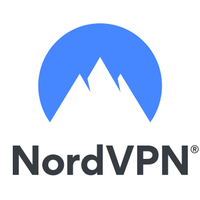But how does it work? Well, streaming sites like Netflix offer different content in different regions, meaning that if you’re abroad, you won’t have the same selection to choose from. This is called geo-blocking. By using a VPN, you can virtually change your location and trick your chosen streaming site into showing you content that would typically be blocked in your physical location. So, here we’ll explain exactly how to use a streaming VPN. Before that, though, we’ll quickly explain how VPNs work with different streaming sites – spoiler alert: there’s no one-size-fits-all approach.
How VPNs work with different sites
Different streaming sites geo-block their content in different ways. Some are only available from a certain country, while others show different content depending on your location. Below we’ve outlined the biggest. Netflix: Arguably the most popular streaming site to use a VPN with, Netflix probably offers the most value for VPN users. Netflix licences content in certain territories that’s licenced by other streaming providers in others. So, for example, The Silence of the Lambs is available on Netflix in Canada, but elsewhere it’s only available on other streaming sites. US viewers might consider using a Netflix VPN to virtually relocate to Canada to watch the movie. BBC iPlayer: The BBC’s streaming service carries a huge amount of both British and global TV, but it’s only available in the UK. If you’re anywhere else, you won’t be able to watch. This can be a problem for Brits abroad, and using a BBC iPlayer VPN to spoof your location back to the UK is an easy fix. Be aware, though, that to watch BBC iPlayer you are expected to be a TV licence holder. Disney Plus: While not as extreme as Netflix, Disney Plus does restrict some content – most notably Star content – in some regions. To get access to this, just use your VPN to change location to a country that has full access.
How to use a streaming VPN
The first thing you’ll need to do is sign up to a quality VPN – we recommend ExpressVPN and NordVPN as frontrunners for streaming. ExpressVPN is our top choice overall, and the support team is very helpful should you find access is blocked to any particular service. NordVPN provides a similar service for a slightly lower price – although its apps are a little less intuitive.
Make sure you’re signed in to your streaming site of choice. Signing in when connected to a VPN has proven problematic in our testing, so make sure you’re ready to go before you connect. Once you’re signed in, close the tab.Launch your VPN, and connect to your chosen server.Open the streaming site in your browser.Search for your chosen TV show or movie.Enjoy!
What if it doesn’t work?
On rare occasions, even the most reliable VPNs can have issues with accessing streaming content – especially with Netflix. If you find this happening to you, there are a couple of things to try. First of all, test out a couple of different servers in your chosen location. Some VPNs allow you to select certain cities, while others automatically connect you to the best server. In any case, this ‘turn it off and on again’ approach often remedies any issues. If you’re still having problems, it’s time to contact your VPN provider. Most of the top VPNs have a live chat feature, so just open that up and get chatting to a member of the team. They should be able to point you in the right direction, and should have up-to-date info on the best servers for each particular streaming service. If all else fails, most VPNs also offer a 30-day money-back guarantee. If you’re within that period, you’re well within your rights to request a refund, and try a different VPN.
What do we recommend?
Claim your 3 extra months absolutely free (opens in new tab) Sign up to NordVPN for just $3.29 a month (opens in new tab)






